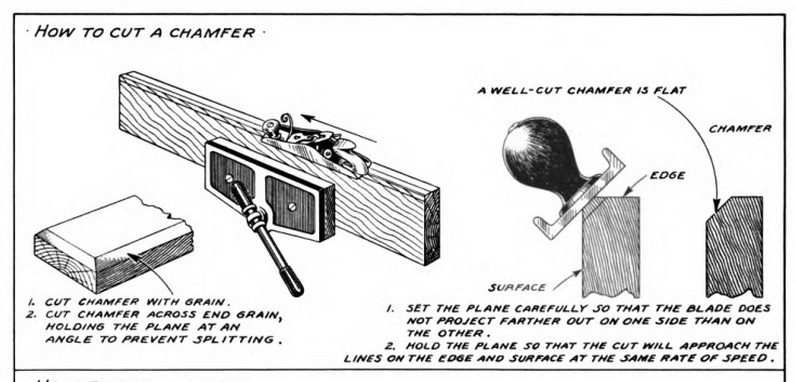[TLDR version: fledgling woodworkers should get a copy of this book or read it online for free.]
Ever wanted to predict which way a stick of lumber will warp? Curious why heartwood is more stable than sapwood? Cramlet crams much useful information about how trees grow, why and how lumber warps, how timber is cut into boards, how to measure board feet, and tips on selecting the strongest wood for handles (use fast grown, straight grain, wood); all in just four pages packed with pictures.
- How to lay out common shapes with a compass.
- Transferring designs with graph paper.
- Setting up, tuning, and using hand planes.
- Basic chisel cuts.
- Filing. Rasping. Shaping. Sawing.
- Several sections on wood joinery, marking, cutting, and fastening.
- Sharpening. You know we woodworkers like to obsess about that.
- And basic finishing.
There are a few projects at the end. Beginning with a simple box and working up to a saw bench, wall cabinet, workbench, tool box, and basic furniture. Projects may vary by edition.



No comments:
Post a Comment